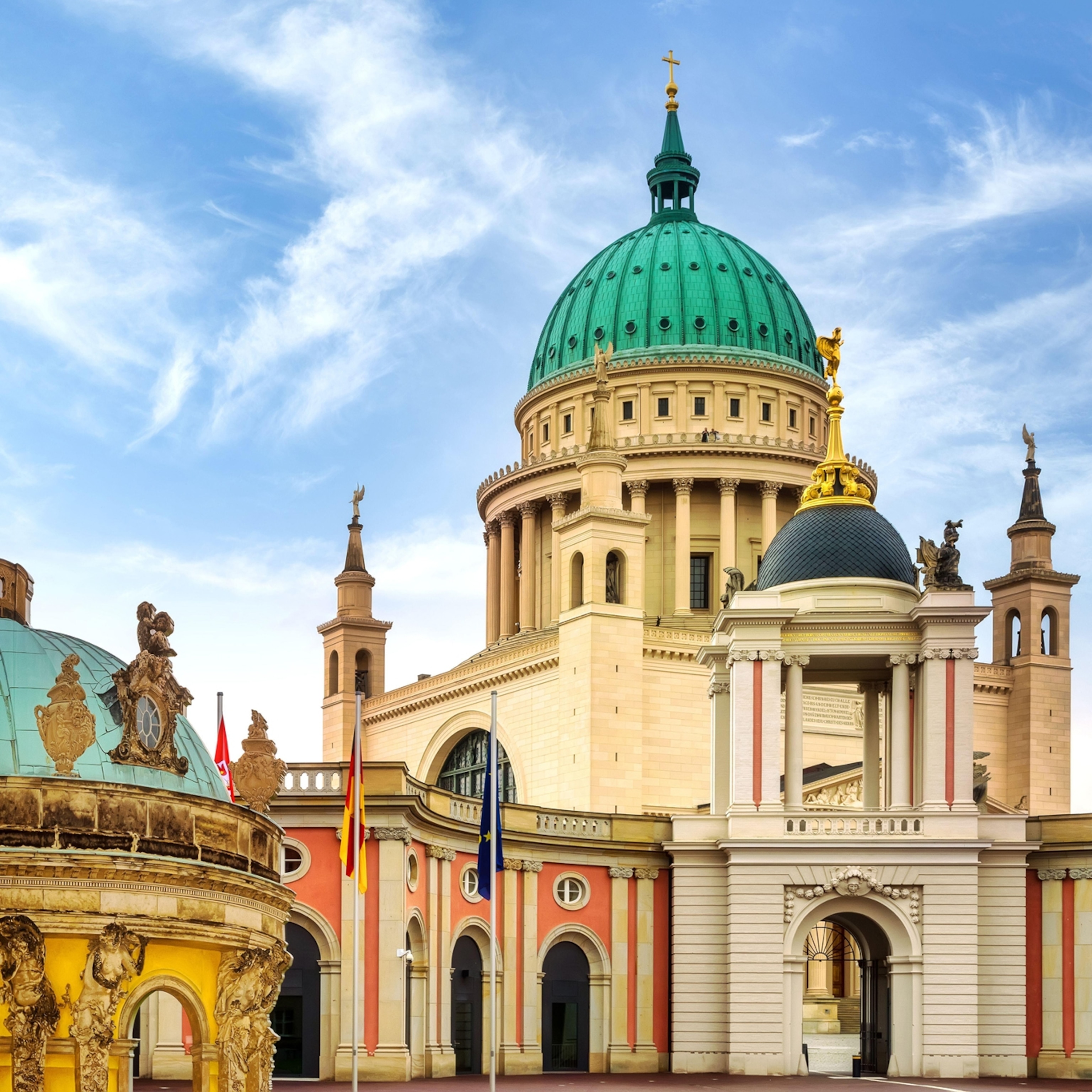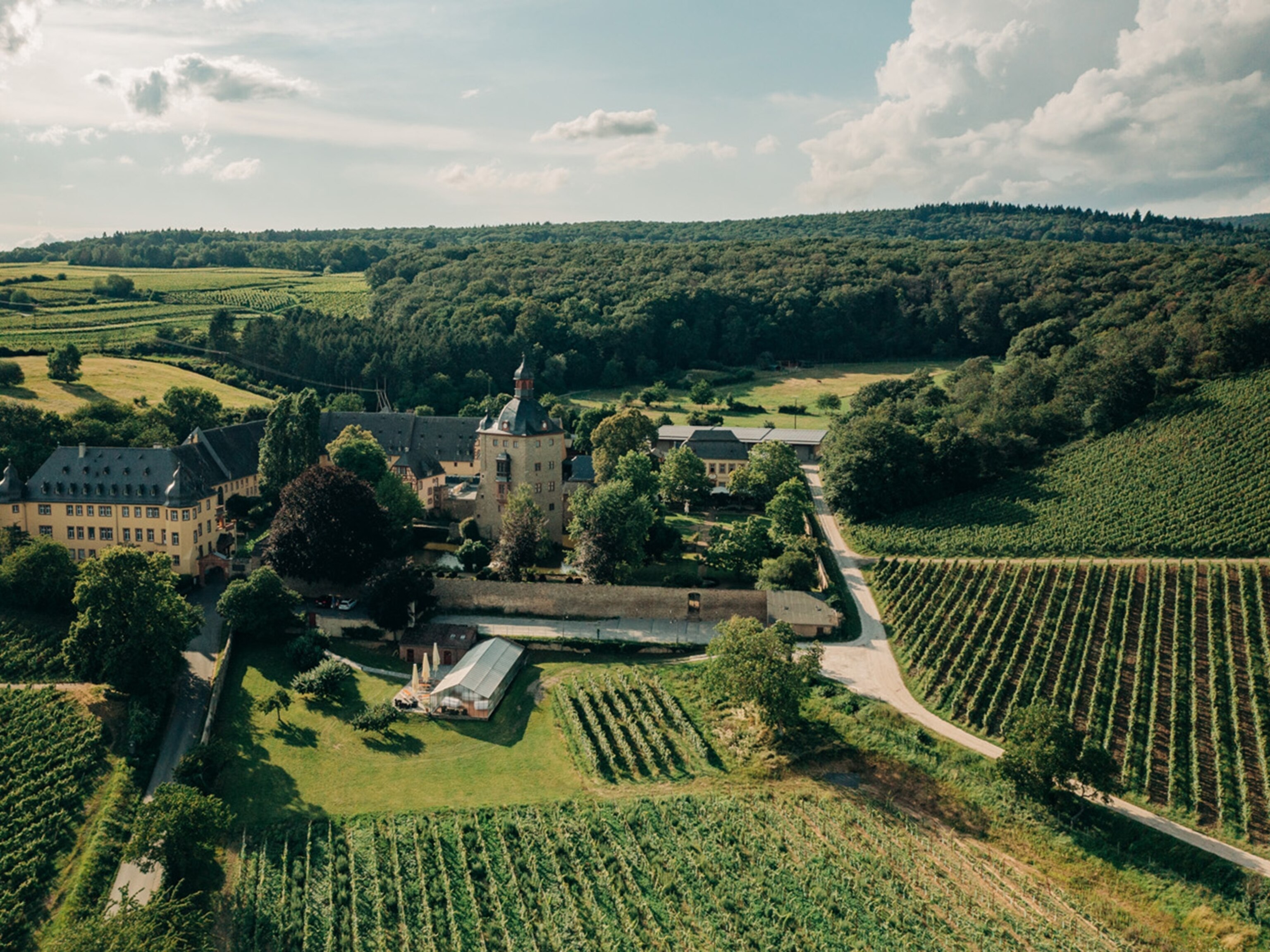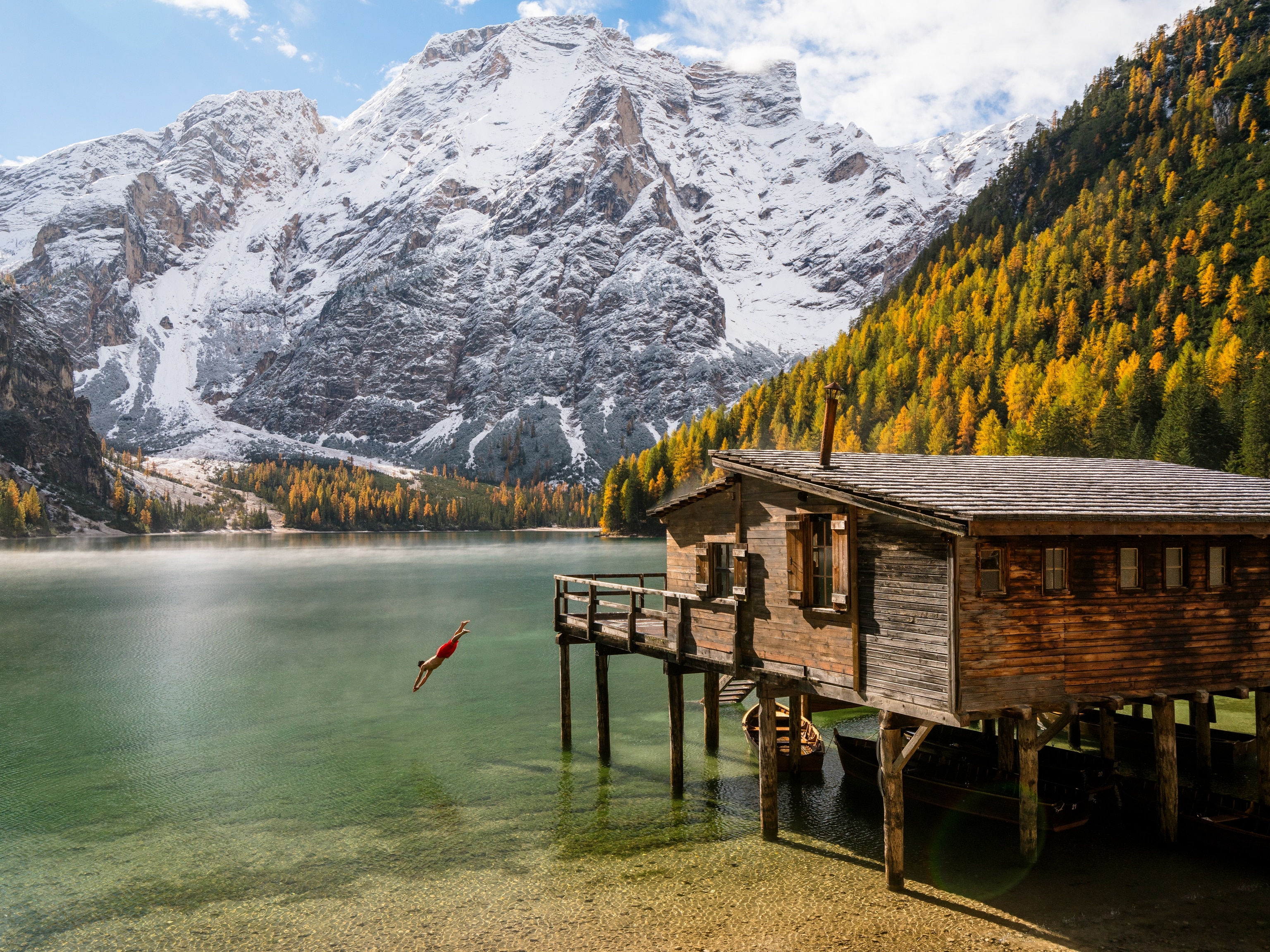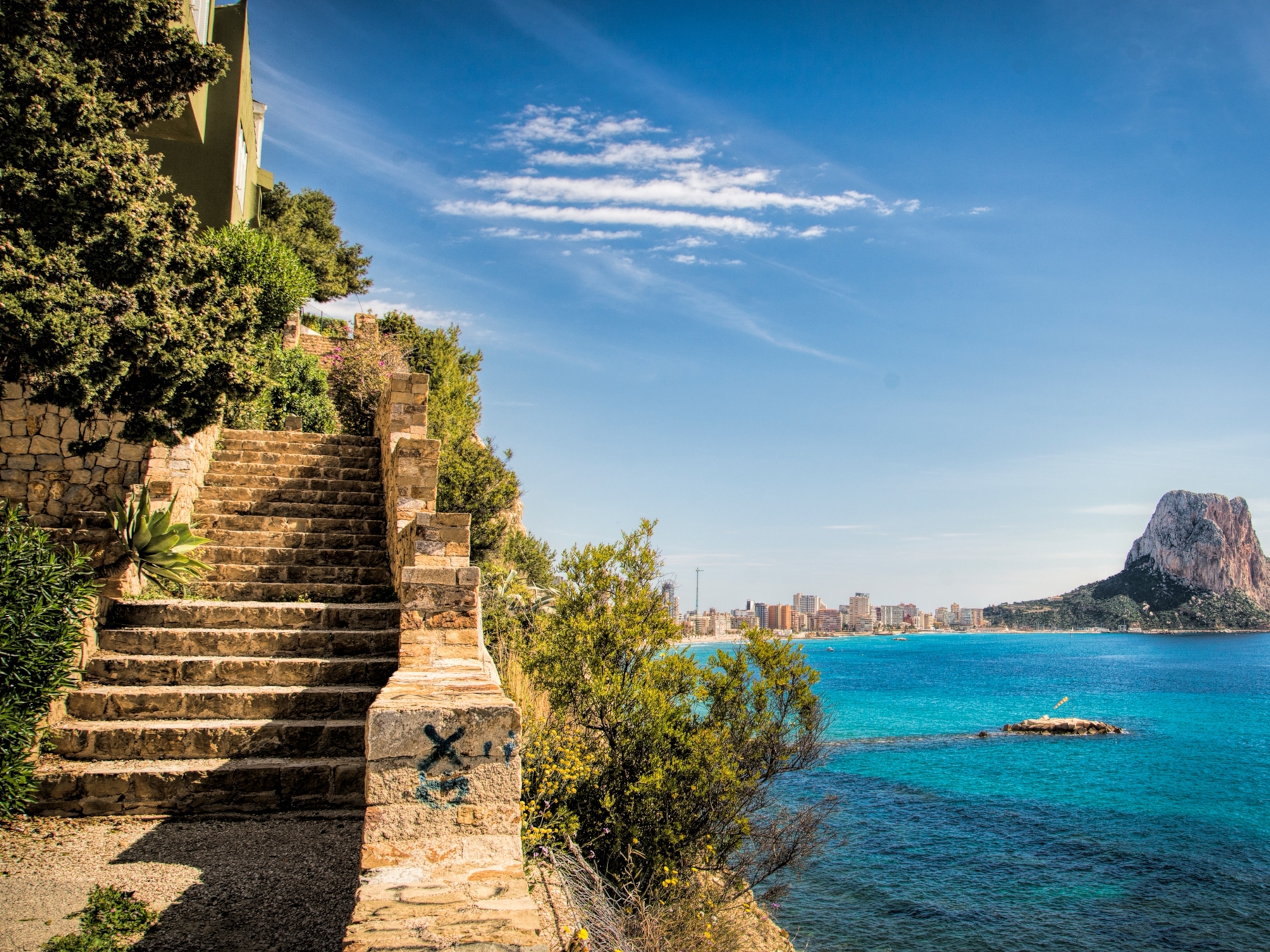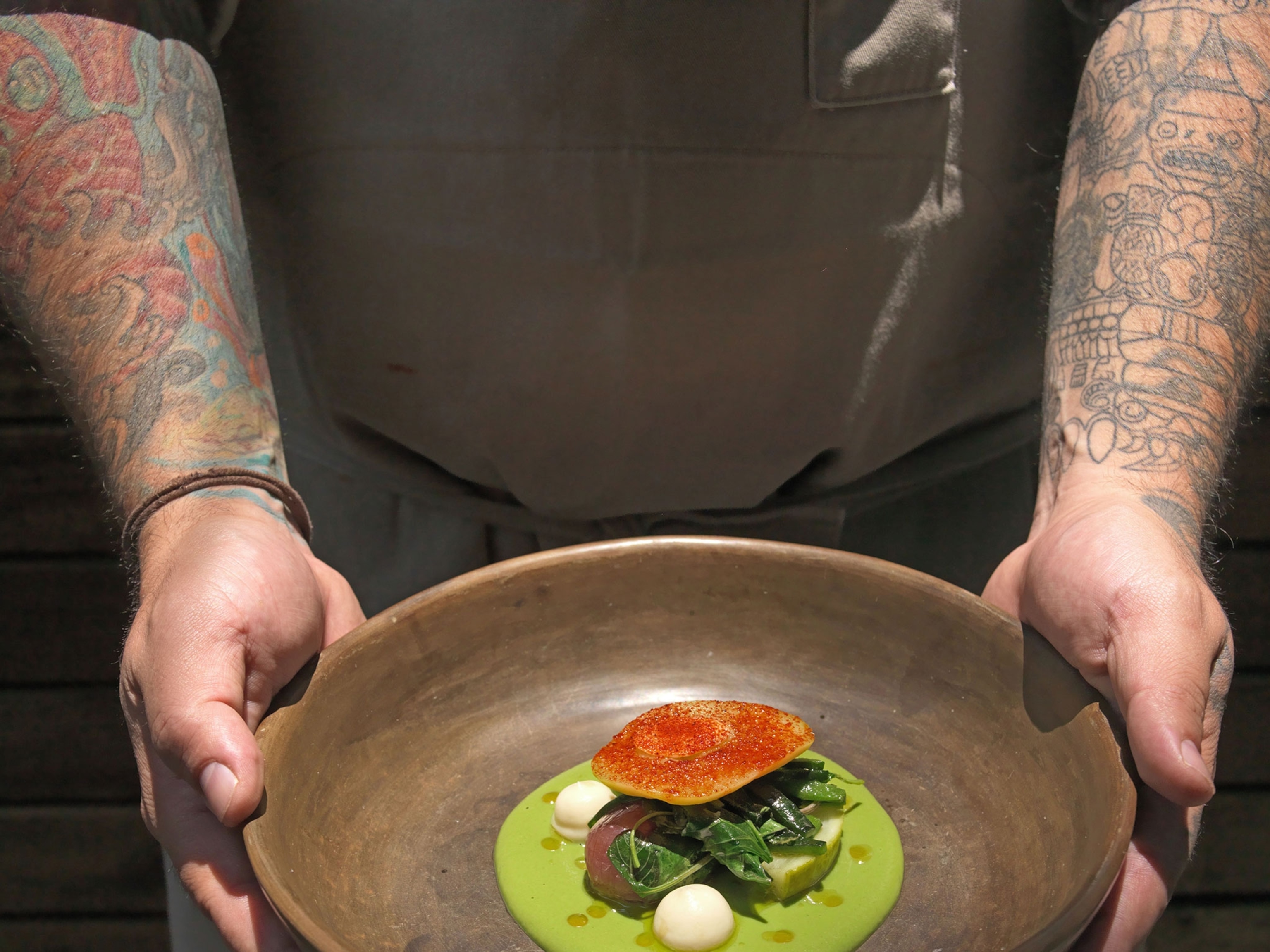
Calling all foodies: Germany's 'white gold' season is in full swing
Nothing ignites Münsterland's food aficionados like asparagus.
I’m scouring the flat upper surface of the knee-high, gray-brown mound of soil for the tiny undulations that might indicate a spear of white asparagus trying to break through.
Standing next to me, Lukasz Dominikowski, armed with his asparagus cutter (a long, flat tool with a sharp, forked blade), has detected a ripple. He plunges two thickly gloved fingers into the soil, pushes it away to expose a single cream-colored spear, then slides his asparagus cutter down alongside it, perfectly parallel, and breaks it away from its root. Picking up a flat trowel, he smoothes over evidence of his operation.
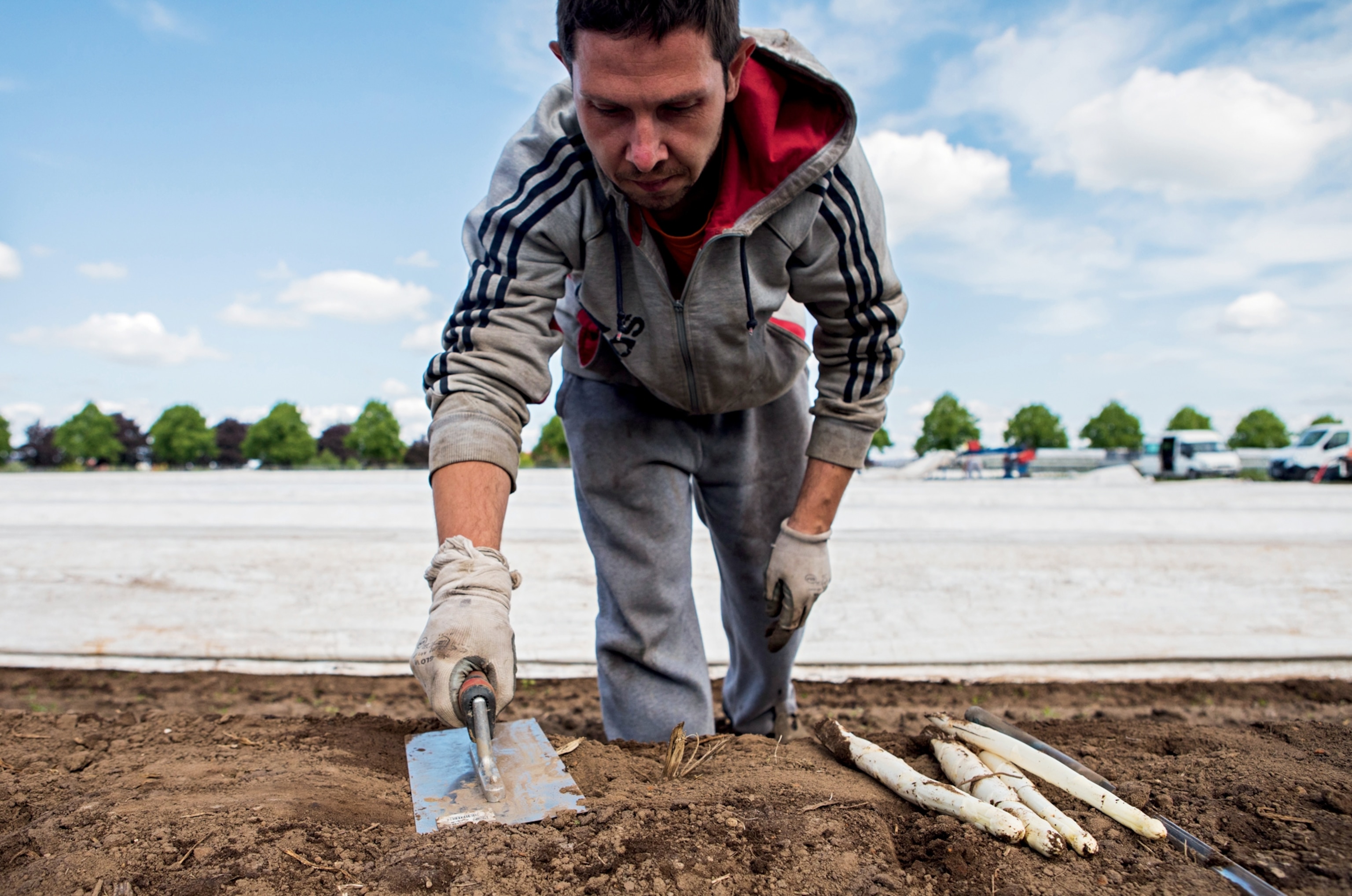
It’s all over in less than 30 seconds, and I’m left trying to work out how he knew anything was there.
It’s hardly surprising Dominikowski has an eye for spotting white asparagus: the 33-year-old has traveled to Hof Grothues-Potthoff, a farm estate with a bakery, farm shop, and hotel, in Senden, Germany—about 10 miles southwest of Münster—for the past eight years, to help harvest and sort up to a hundred tons of Germany’s white gold. Every April, he leaves his wife and job in Poznań, Poland, to work 10 hours a day, six days a week, until the official end of the season on June 24, the Feast Day of St. John the Baptist. It looks like backbreaking work, but Dominikowski thoroughly enjoys it. “It’s satisfying, and the money’s much better than repairing computers back home,” he says.
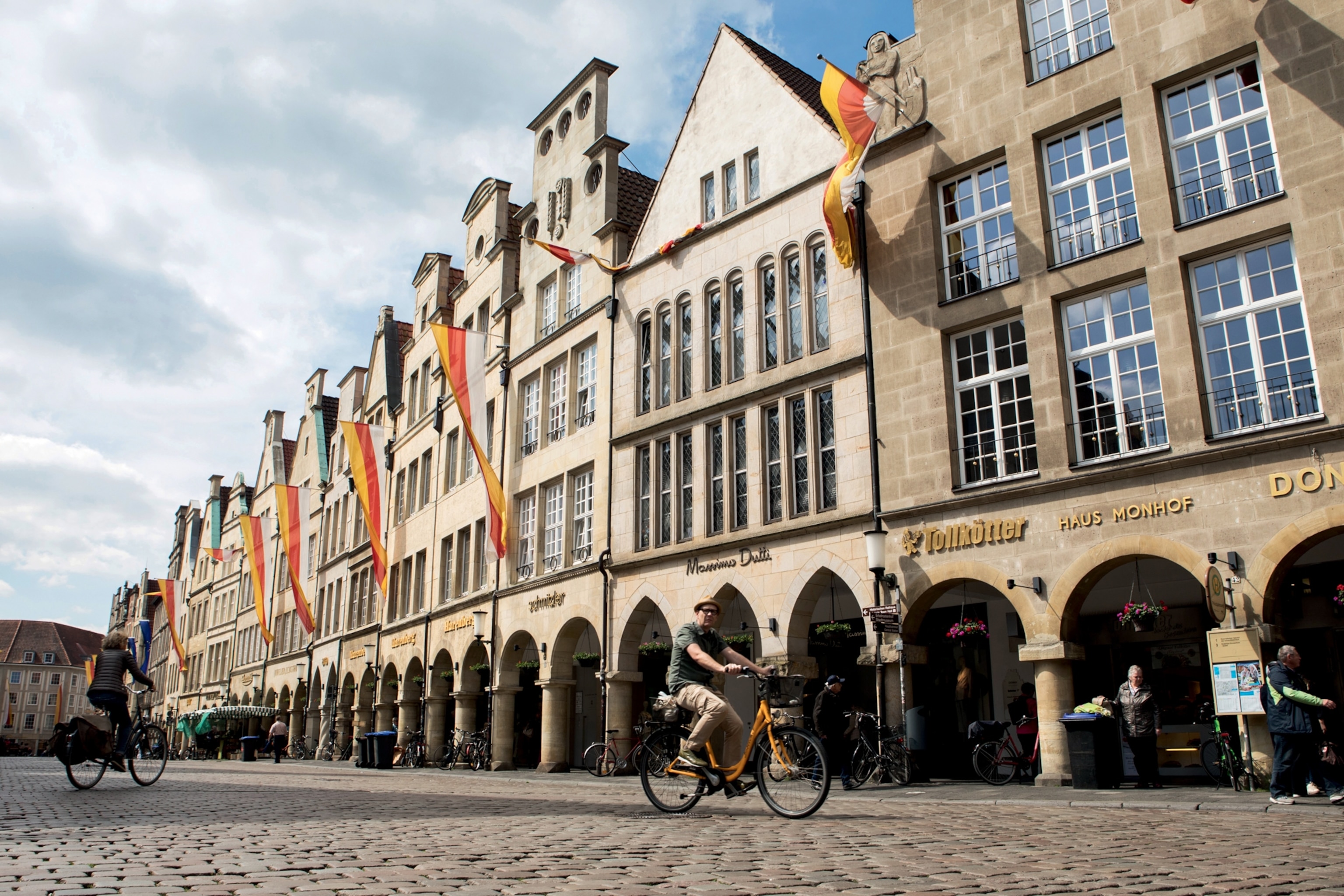
The precise art of growing asparagus
White asparagus season is celebrated with a passion in Germany, and I’ve come to the flat, castle-filled region of Münsterland, with its maritime climate and sandy soil prime for the spring vegetable’s production, to find out why. Elmar Grothues, who with his siblings oversees a 14-generation-old family farm, takes me to a newly planted field. Pulling a bundle of roots from the soil—a cluster of earthy rats’ tails attached to a feathery green shoot—he explains the labor-intensive white-asparagus-growing process. It requires precision planting and constant monitoring of the soil that’s heaped over the spears to prevent them being exposed to sunlight: if it’s too hot, too cold, too wet, dry or hard, the growth of the spears is affected. It’s hard work made easier through modern technology and the support of a collaborative local network: Grothues uses manure donated by a pig farm; their asparagus waste goes to a dairy farm as cow fodder.
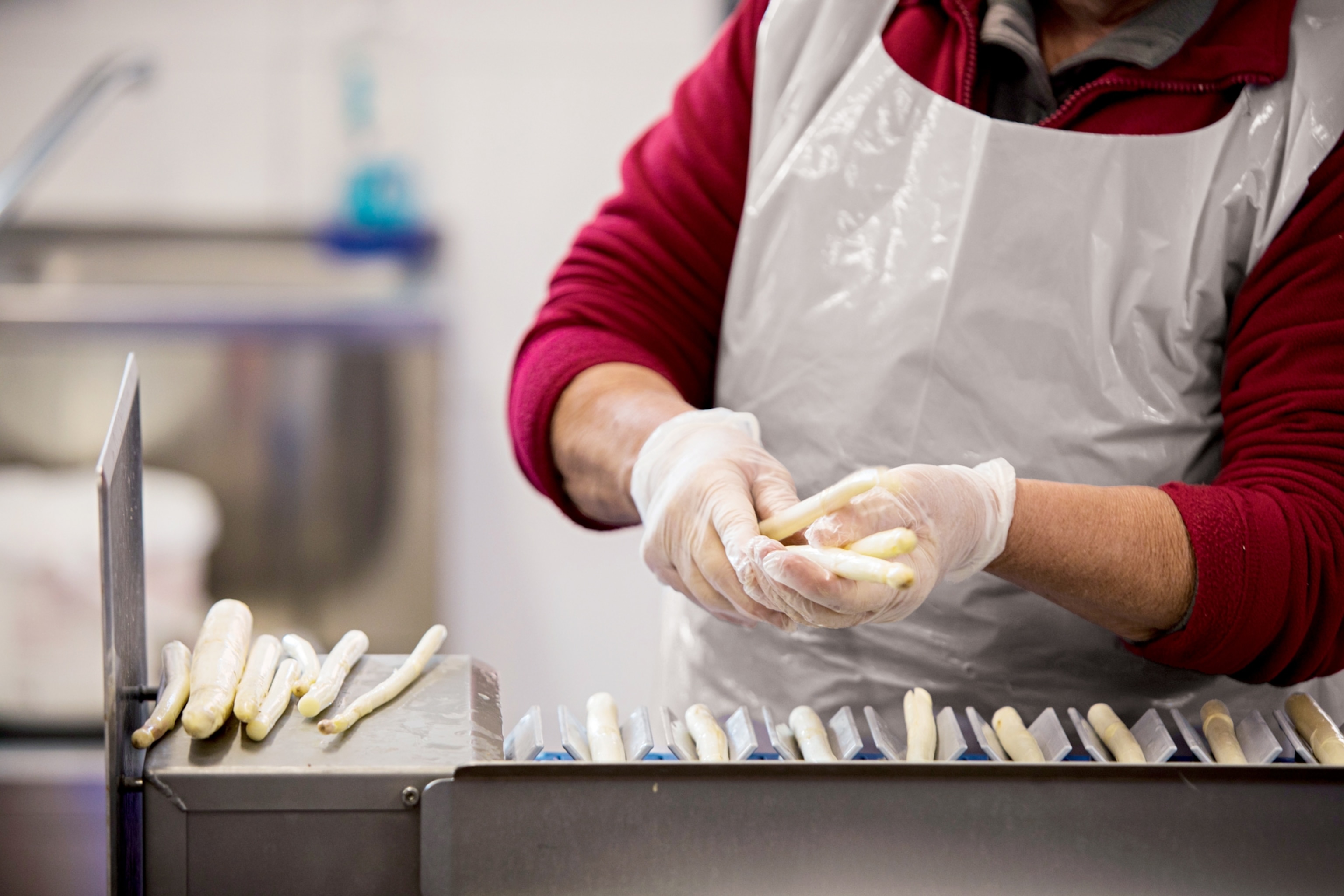
We arrive at the farmyard just as Dominikowski and his co-workers are hoisting crates containing the morning’s harvest off their truck and into a barn. The crates are filled with cold water to keep the asparagus at peak freshness. The shiny steel sorting machine is a veritable homage to the German love of systems and procedure; each spear is sliced to a uniform length before being computer-analyzed, classed, and spat out into one of 20 water troughs for manual collection and storage. The straightest, smoothest, whitest spears with a tightly closed head command a far higher price than the broken or discolored ones. I wonder if their appearance is a reflection of quality. “Not at all,” Grothues admits, rather sheepishly, “It all tastes the same. We just like it looking nicer on the plate.”
The day before, in the lively student city of Münster, I’d seen signs of the city’s culinary history everywhere, from plaques among the cobblestones marking the old salt trading route, to white asparagus carved into the stone facade of a private mansion. Münster’s old town, almost completely destroyed in the Second World War, was rebuilt in its prewar style, and the buildings along the Prinzipalmarkt—tall, pale, and narrow with acutely angled roofs—look not unlike a row of white asparagus tips themselves.
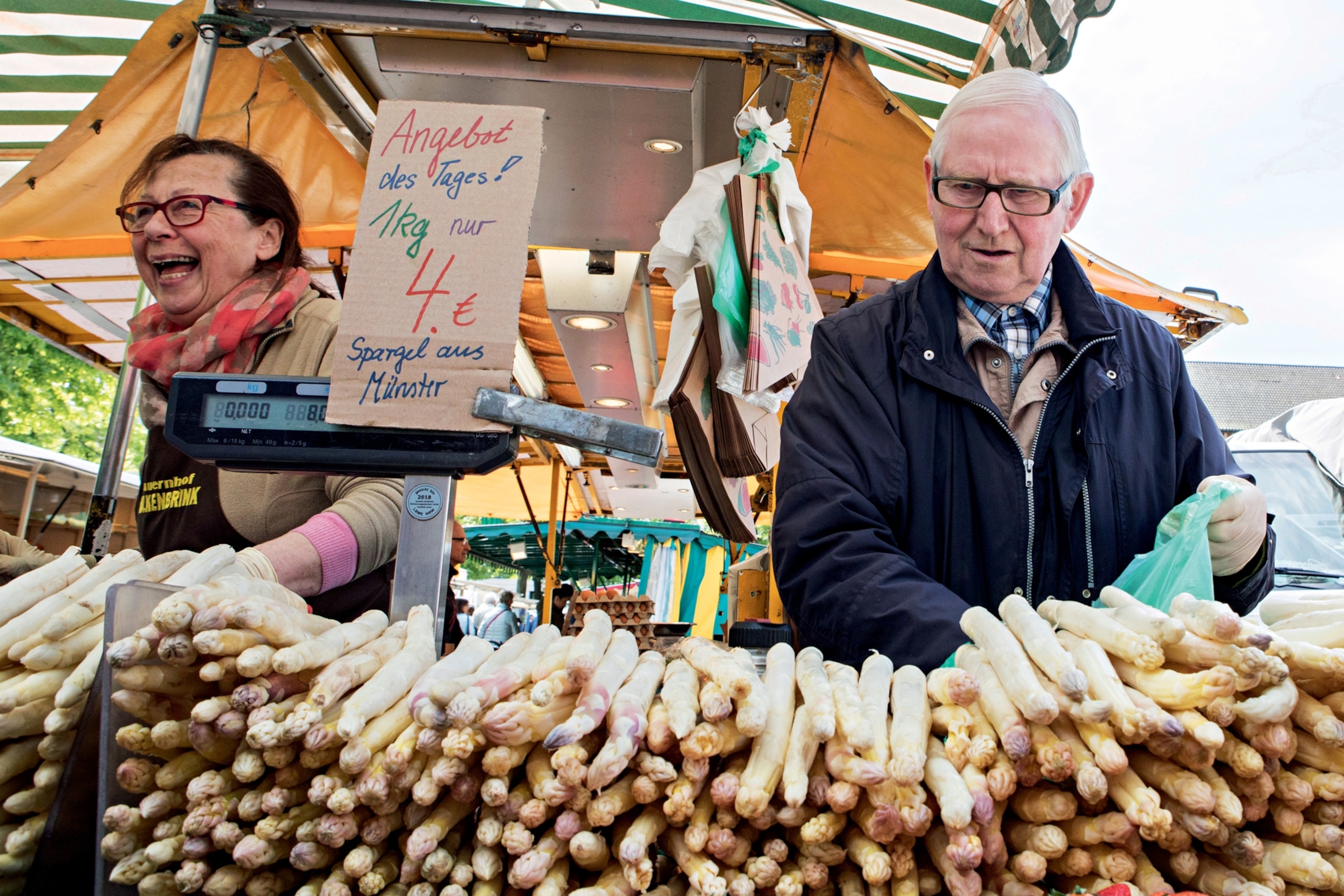
The city’s weekly market, a maze of trucks and stands shaded by colorful awnings, takes place in a large, leafy square by the cathedral. The fresh produce stands are currently dominated by baskets of jewel-red strawberries and stacks of bright white asparagus. The annual asparagus harvest is a source of great local pride, and I find only one vendor indifferent to it: “I grew up with two white asparagus addicts for parents,” she says. “Back in the ’50s we grew it ourselves, like most people, and we never went to market. I’ve eaten my fill, and it doesn’t interest me anymore.”
Today, the market is still shunned by some locals—those who prefer to buy their white asparagus from the source. Heading out on the weekend into the countryside, often by bicycle—with a spectacularly flat landscape, it’s obvious why Münster is Germany’s cycling capital—they like to support local producers, and they want to know where their food comes from. Many farms now open a restaurant in the harvest season, serving white asparagus dishes in the sunshine, right where it’s grown.
From budding sprout to sumptuous stew
It’s a short walk from the marketplace to Altes Gasthaus Leve, a traditional German restaurant that’s been in the same family for three generations. Josef Horstmöller greets me at the end of the long, wooden bar, eyes twinkling, salt-and-pepper beard neatly groomed, and bow tie knotted meticulously beneath his chin. During the high season, he tells me, his restaurant serves up to 220 pounds of white asparagus a week.
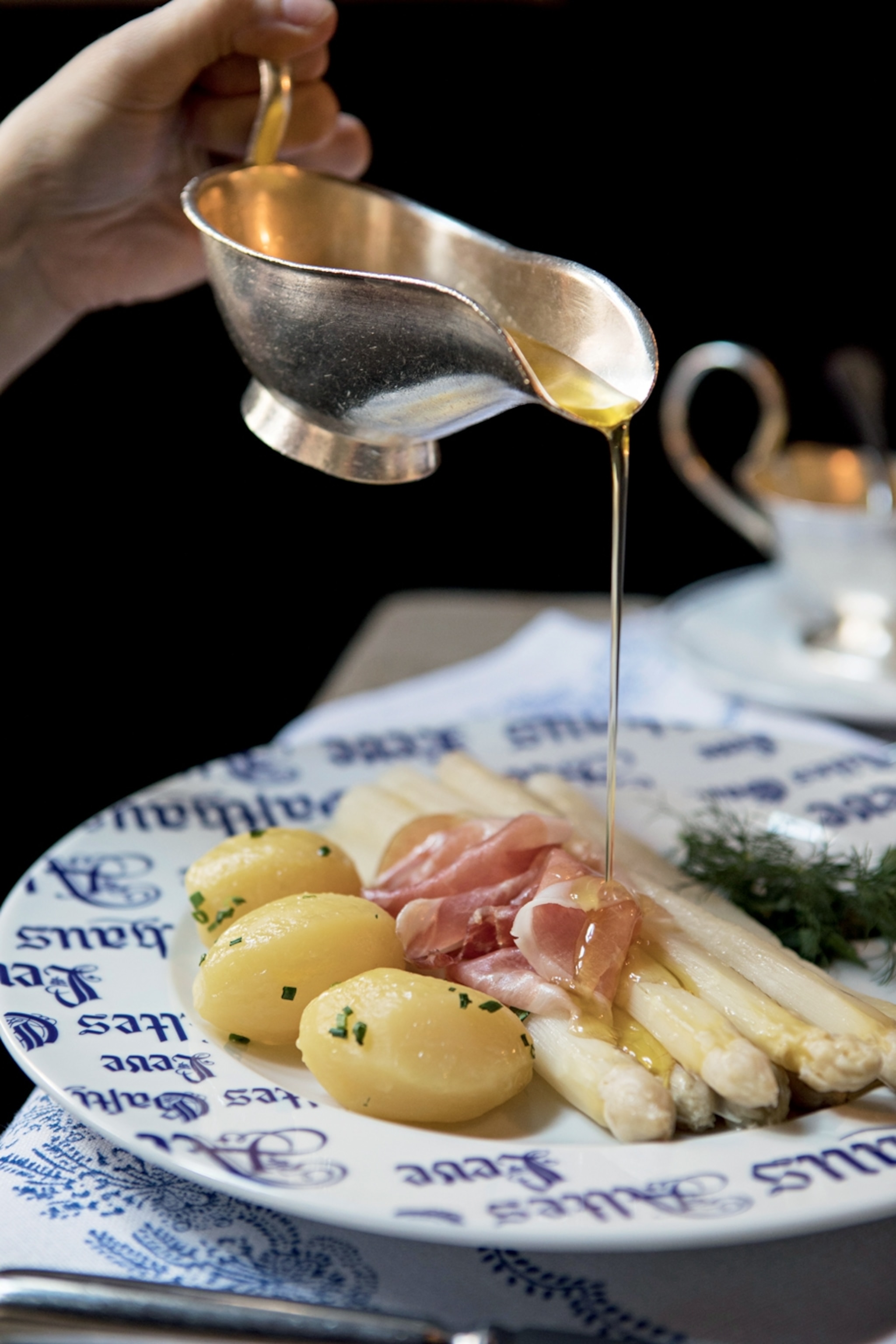
Some of Horstmöller’s customers have been eating at Leve for more than 50 years, and he and head chef Frank Lembeck, who’s emerged from the kitchen in his chef’s whites, know them well. “Out of habit, their main meal is lunch, perhaps white asparagus served the classic way, with ham and potatoes,” Lembeck explains. “Or they might order chicken stew. In the evening, they’ll have bread and soup. The younger evening crowd is open to a more creative menu, but we know what our regulars want.” I ask Lembeck if he’d put green asparagus on the menu. He shakes his head.
As is the case at Hof Grothues-Potthoff, nothing here goes to waste. Peelings are used to make a delicate, creamy soup; broken spears are added to stews. And like Elmar Grothues, Horstmöller fosters strong local relationships; he’s been buying his asparagus from the same farm for more than 20 years.
I sit down at a small wooden table, where waitress and student Paulina Brandt, dressed in a traditional black and white uniform, brings my plate of white asparagus with a smile.
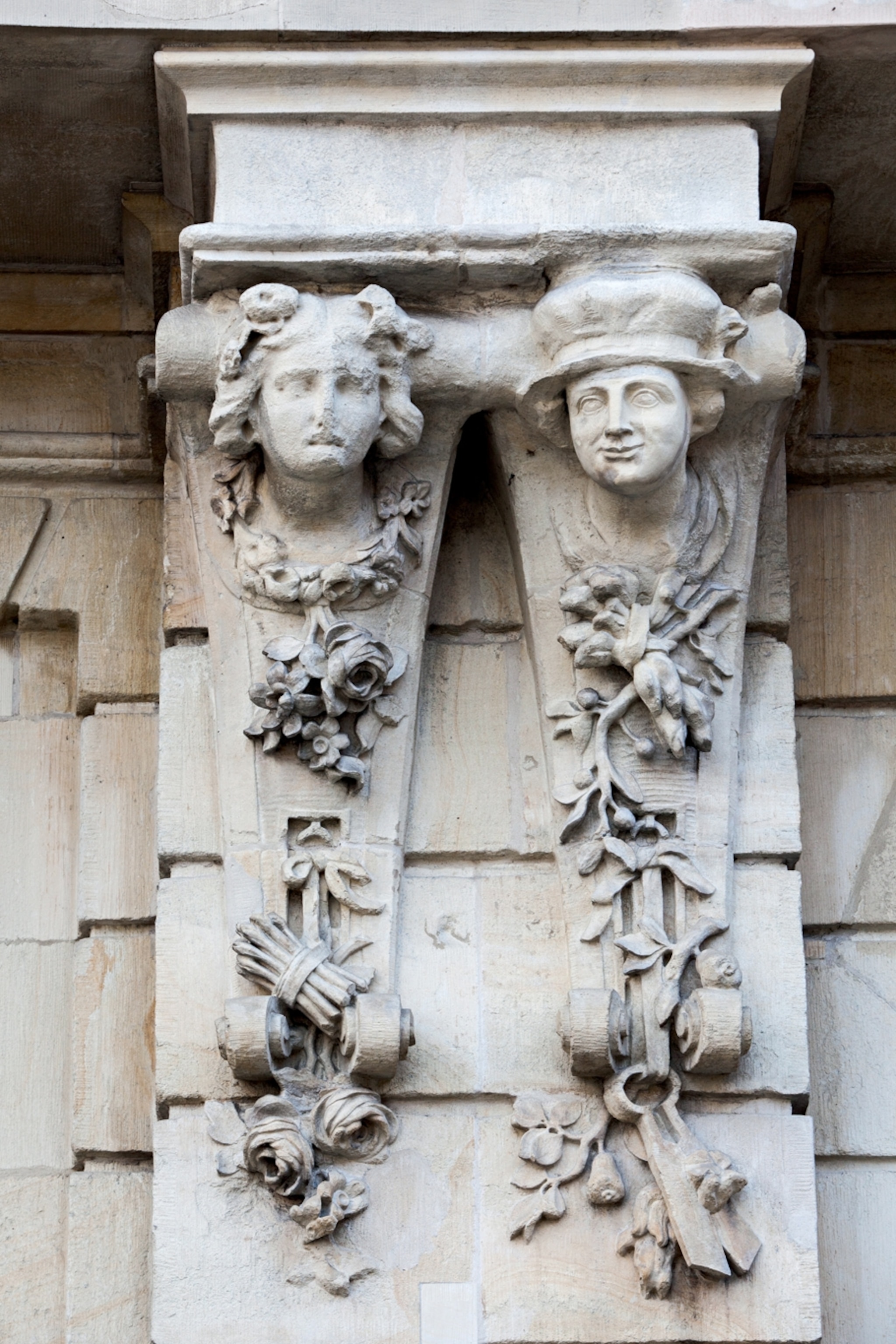
With a backdrop of wood-paneled walls and hand-painted tiles; a tall, flickering candle; and a glass of honey-colored Mosel Riesling, my lunch could be a Dutch Golden Age painting. The raft of white asparagus—straight and meticulously aligned—shares the plate with waxy, yellow new potatoes and a crumpled heap of wafer-thin, dark pink Westphalian ham (a regional delicacy made from acorn-fed, forest-dwelling pigs; their meat is dry-cured and cold-smoked over beechwood).
This is the best of the best local produce, prepared and cooked very simply, and I suddenly feel terribly spoiled. Brandt puts down two stainless steel sauce boats next to my plate. One is filled with a bright yellow hollandaise so thick it wobbles, the other with a pool of glossy melted butter. I ask why she likes white asparagus, and she gives the same answer I keep receiving: “It’s around for such a very short time and has such a fine taste, plus it’s full of vitamins, so it’s really very healthy.” I drown my spears in butter.
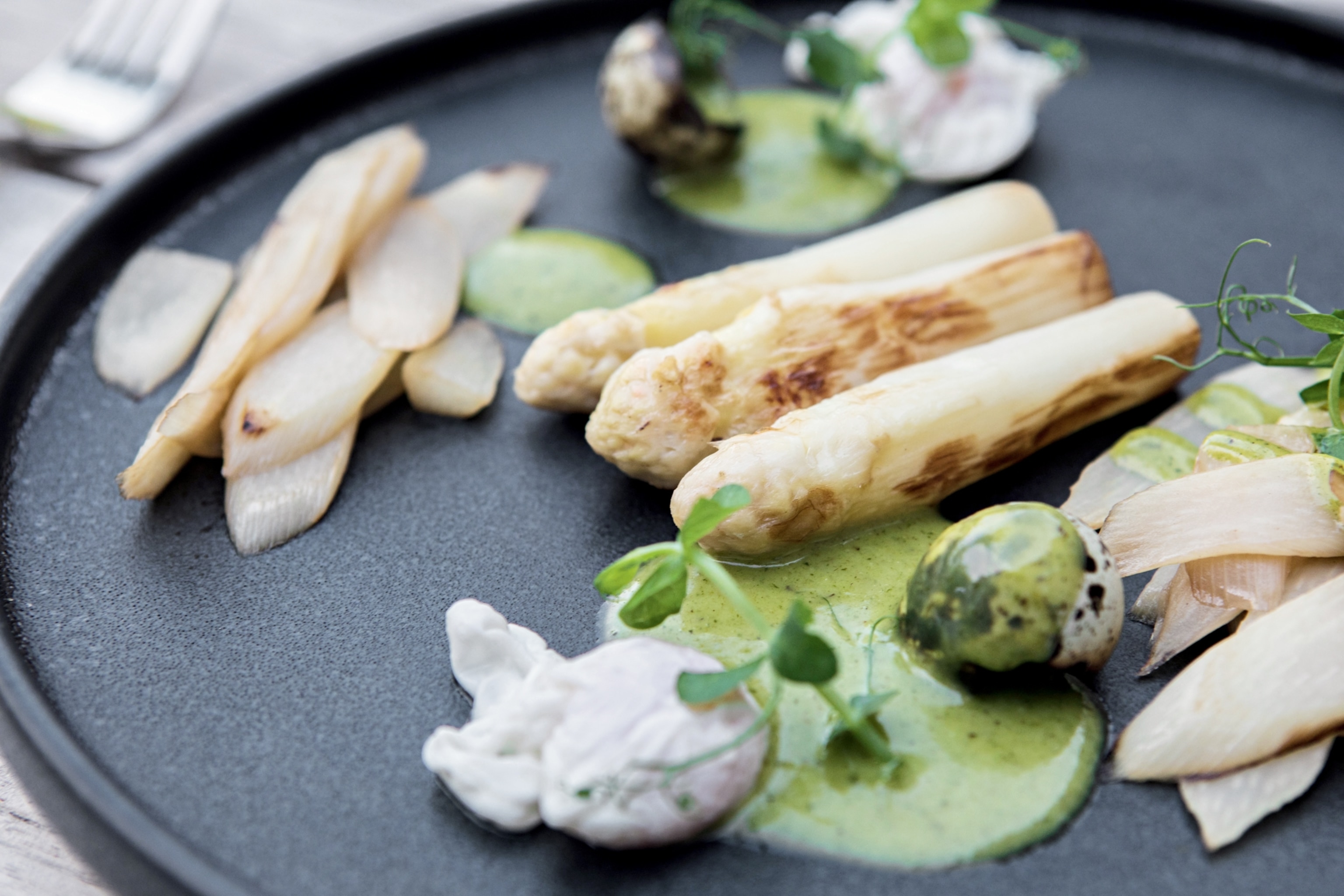
Over the course of my three days here, I try white asparagus several ways. There’s the soup, garnished with chives. I eat it grilled, served with poached quails’ eggs and dots of bright green moss mayonnaise. But it’s the potatoes and ham that I keep thinking about: it’s an old-fashioned dish, yet it doesn’t feel outdated.
White asparagus, I’ve learned, represents what’s important to many people in Münsterland—a deep pride in their regional produce and respect for hard work, a love of quality ingredients prepared simply and without waste, and an appreciation for tradition. Isn’t it lucky, I think, that it tastes so good.
Eat
Altes Gasthaus Leve: Among the local favorites at this traditional German restaurant is a delicately flavored, silky cream-of-white-asparagus soup.
Hafenkäserei: Down by Münster’s harbor, this organic dairy produces creatively flavoured Gouda and red smear cheeses using four-generation-old processes. In the café, cheeses are served with beers from one of Münster’s craft breweries.
Seasonal farms: Both Hof Lütke Laxen and Spargelhof Hengemann are open to serve meals during harvest season.
Sleep
H4 Hotel Münster: This chain business hotel has bright modern rooms and is centrally located. Many of Münster’s main sights are easily reachable by foot.
Hof Grothues-Potthoff: This quiet boutique hotel offers stylish, comfortable rooms, a small sauna, and friendly staff. The terraced restaurant serves an excellent breakfast as well as the farm’s own white asparagus in season.
- National Geographic Expeditions
